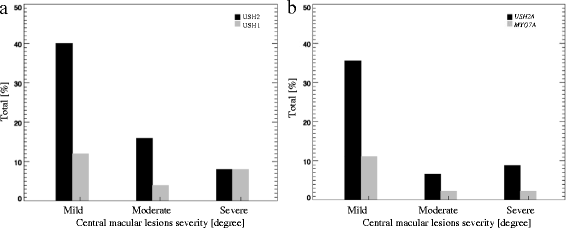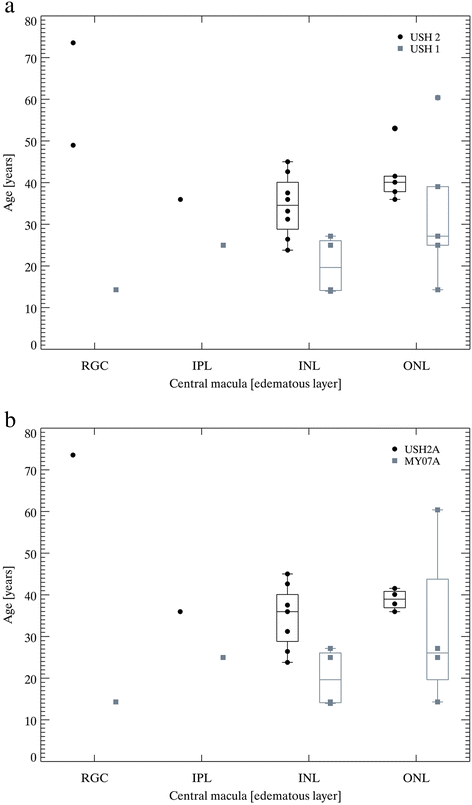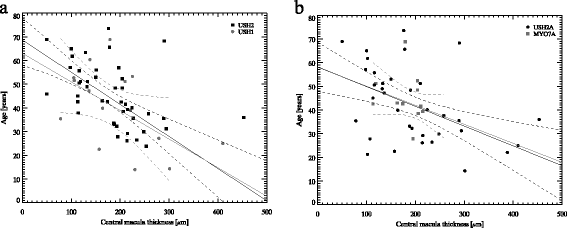Novel grading system for quantification of cystic macular lesions in Usher syndrome
- PMID: 26654877
- PMCID: PMC4676164
- DOI: 10.1186/s13023-015-0372-0
Novel grading system for quantification of cystic macular lesions in Usher syndrome
Abstract
Background: To evaluate novel grading system used to quantify optical coherence tomography (OCT) scans for cystic macular lesions (CML) in Usher syndrome (USH) patients, focusing on CML associated alterations in MOY7A and USH2A mutations.
Methods: Two readers evaluated 76 patients' (mean age 42 ± 14 years) data prospectively uploaded on Eurush database. OCT was used to obtain high quality cross-sectional images through the fovea. The CML was graded as none, mild, moderate or severe, depending on the following features set: subretinal fluid without clearly detectable CML boundaries; central macular thickness; largest diameter of CML; calculated mean of all detectable CML; total number of detectable CML; retinal layers affected by CML. Intra-and inter-grader reproducibility was evaluated.
Results: CML were observed in 37 % of USH eyes, while 45 % were observed in MYO7A and 29 % in USH2A cases. Of those with CML: 52 % had mild, 22 % had moderate and 26 % had severe changes, respectively. CML were found in following retinal layers: 50 % inner nuclear layer, 44 % outer nuclear layer, 6 % retinal ganglion cell layer. For the inter-grader repeatability analysis, agreements rates for CML were 97 % and kappa statistics was 0.91 (95 % CI 0.83-0.99). For the intra-grader analysis, agreement rates for CML were 98 %, while kappa statistics was 0.96 (95 % CI 0.92-0.99).
Conclusions: The novel grading system is a reproducible tool for grading OCT images in USH complicated by CML, and potentially could be used for objective tracking of macular pathology in clinical therapy trials.
Figures




References
Publication types
MeSH terms
LinkOut - more resources
Full Text Sources
Other Literature Sources
Medical

